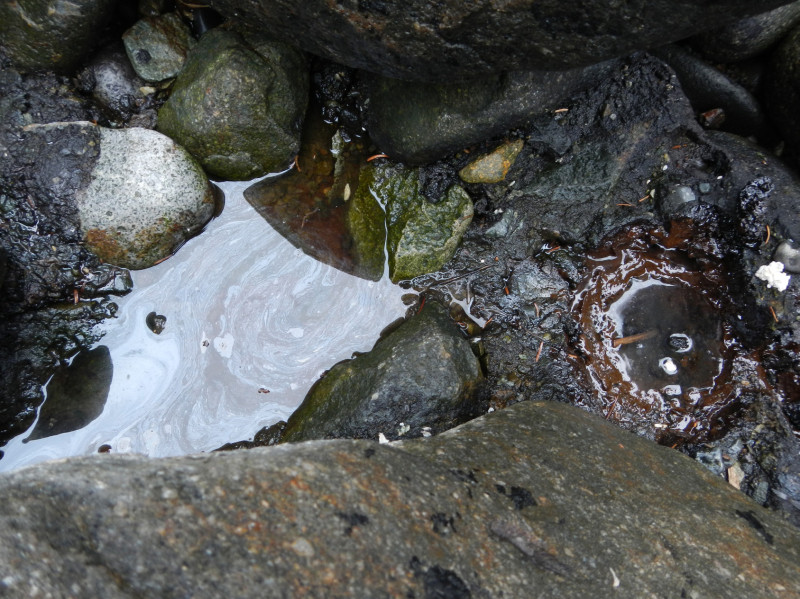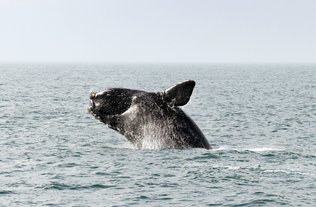While the announcement just now by EPA does not have direct implications for protecting Bristol Bay from offshore drilling, EPA’s recognition and acknowledgement of the world-class salmon stocks there can’t hurt …..Richard Charter
_______
Release Date: 02/28/2014
Contact Information: Hanady Kader, EPA Public Affairs, 206-553-0454, kader.hanady@epa.gov
(Washington, D.C.-Feb. 28, 2014) The U.S. Environmental Protection Agency is initiating a process under the Clean Water Act to identify appropriate options to protect the world’s largest sockeye salmon fishery in Bristol Bay, Alaska from the potentially destructive impacts of the proposed Pebble Mine. The Pebble Mine has the potential to be one of the largest open pit copper mines ever developed and could threaten a salmon resource rare in its quality and productivity. During this process, the U.S. Army Corps of Engineers cannot approve a permit for the mine.
This action, requested by EPA Administrator Gina McCarthy, reflects the unique nature of the Bristol Bay watershed as one of the world’s last prolific wild salmon resources and the threat posed by the Pebble deposit, a mine unprecedented in scope and scale. It does not reflect an EPA policy change in mine permitting.
“Extensive scientific study has given us ample reason to believe that the Pebble Mine would likely have significant and irreversible negative impacts on the Bristol Bay watershed and its abundant salmon fisheries,” said EPA Administrator Gina McCarthy. “It’s why EPA is taking this step forward in our effort to ensure protection for the world’s most productive salmon fishery from the risks it faces from what could be one of the largest open pit mines on earth. This process is not something the Agency does very often, but Bristol Bay is an extraordinary and unique resource.”
The EPA is basing its action on available information, including data collected as a part of the agency’s Bristol Bay ecological risk assessment and mine plans submitted to the Securities and Exchange Commission. Today, Dennis McLerran, EPA Regional Administrator for EPA Region 10, sent letters to the U.S. Army Corps of Engineers, the State of Alaska, and the Pebble Partnership initiating action under EPA’s Clean Water Act Section 404(c) authorities.
“Bristol Bay is an extraordinary natural resource, home to some of the most abundant salmon producing rivers in the world. The area provides millions of dollars in jobs and food resources for Alaska Native Villages and commercial fishermen,” McLerran said. “The science EPA reviewed paints a clear picture: Large-scale copper mining of the Pebble deposit would likely result in significant and irreversible harm to the salmon and the people and industries that rely on them.”
Today’s action follows the January 2014 release of EPA’s “Assessment of Potential Mining Impacts on Salmon Ecosystems of Bristol Bay, Alaska,” a study that documents the significant ecological resources of the region and the potentially destructive impacts to salmon and other fish from potential large-scale copper mining of the Pebble Deposit. The assessment indicates that the proposed Pebble Mine would likely cause irreversible destruction of streams that support salmon and other important fish species, as well as extensive areas of wetlands, ponds and lakes.
In 2010, several Bristol Bay Alaska Native tribes requested that EPA take action under Clean Water Act Section 404(c) to protect the Bristol Bay watershed and salmon resources from development of the proposed Pebble Mine, a venture backed by Northern Dynasty Minerals. The Bristol Bay watershed is home to 31 Alaska Native Villages. Residents of the area depend on salmon as a major food resource and for their economic livelihood, with nearly all residents participating in subsistence fishing.
Bristol Bay produces nearly 50 percent of the world’s wild sockeye salmon with runs averaging 37.5 million fish each year. The salmon runs are highly productive due in large part to the exceptional water quality in streams and wetlands, which provide valuable salmon habitat.
The Bristol Bay ecosystem generates hundreds of millions of dollars in economic activity and provides employment for over 14,000 full and part-time workers. The region supports all five species of Pacific salmon found in North America: sockeye, coho, Chinook, chum, and pink. In addition, it is home to more than 20 other fish species, 190 bird species, and more than 40 terrestrial mammal species, including bears, moose, and caribou.
Based on information provided by The Pebble Partnership and Northern Dynasty Minerals, mining the Pebble deposit may involve excavation of a pit up to one mile deep and over 2.5 miles wide — the largest open pit ever constructed in North America. Disposal of mining waste may require construction of three or more massive earthen tailings dams as high as 650 feet. The Pebble deposit is located at the headwaters of Nushagak and Kvichak rivers, which produce about half of the sockeye salmon in Bristol Bay.
The objective of the Clean Water Act is to restore and maintain the chemical, physical, and biological integrity of the nation’s waters. The Act emphasizes protecting uses of the nation’s waterways, including fishing.
The Clean Water Act generally requires a permit under Section 404 from the U.S. Army Corps of Engineers before any person places dredge or fill material into wetlands, lakes and streams. Mining operations typically involve such activities and must obtain Clean Water Act Section 404 permits. Section 404 directs EPA to develop the environmental criteria the Army Corps uses to make permit decisions. It also authorizes EPA to prohibit or restrict fill activities if EPA determines such actions would have unacceptable adverse effects on fishery areas.
The steps in the Clean Water Act Section 404(c) review process are:
Step 1 – Consultation period with U.S. Army Corps of Engineers and owners of the site, initiated today.
Step 2 – Publication of Proposed Determination, including proposed prohibitions or restrictions on mining the Pebble deposit, in Federal Register for public comment and one or more public hearings.
Step 3 – Review of public comments and development of Recommended Determination by EPA Regional Administrator to Assistant Administrator for Water at EPA Headquarters in Washington, DC.
Step 4 – Second consultation period with the Army Corps and site owners and development of Final Determination by Assistant Administrator for Water, including any final prohibitions or restrictions on mining the Pebble deposit.
Based on input EPA receives during any one of these steps, the agency could decide that further review under Section 404(c) is not necessary.
Now that the 404(c) process has been initiated, the Army Corps cannot issue a permit for fill in wetlands or streams associated with mining the Pebble deposit until EPA completes the 404(c) review process.
EPA has received over 850,000 requests from citizens, tribes, Alaska Native corporations, commercial and sport fisherman, jewelry companies, seafood processors, restaurant owners, chefs, conservation organizations, members of the faith community, sport recreation business owners, elected officials and others asking EPA to take action to protect Bristol Bay.
For information on the Clean Water Act Section 404(c) visit: http://water.epa.gov/lawsregs/guidance/cwa/dredgdis/upload/404c.pdf (PDF, 2 pp, 600K)
For information on the EPA Bristol Bay Assessment, visit: http://www2.epa.gov/bristolbay
Follow @EPAnorthwest on Twitter! https://twitter.com/EPAnorthwest
Special thanks to Richard Charter

